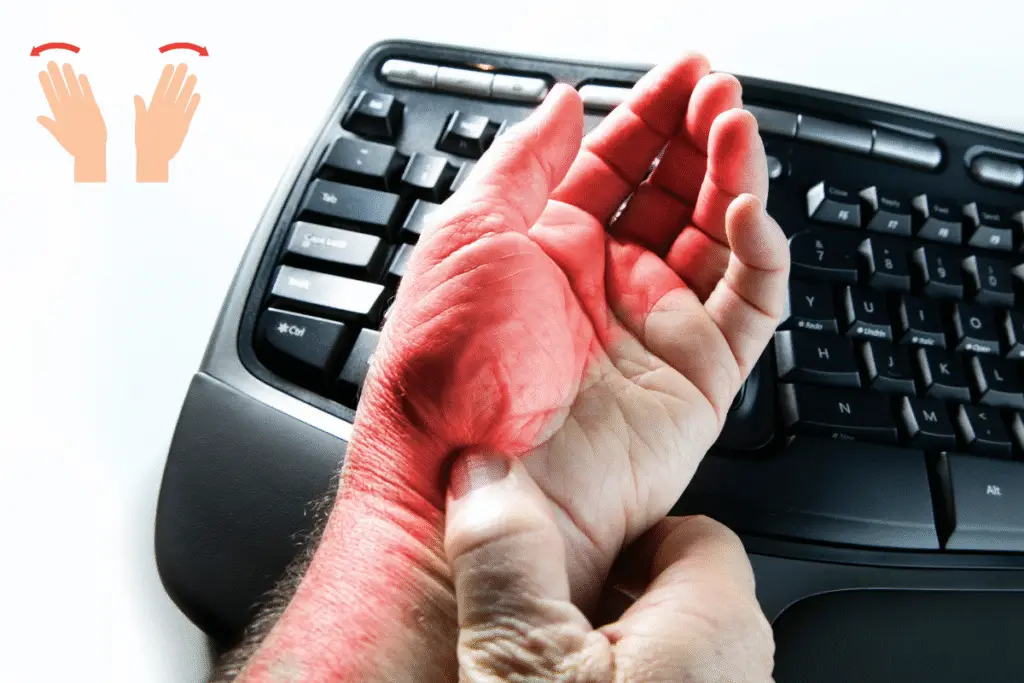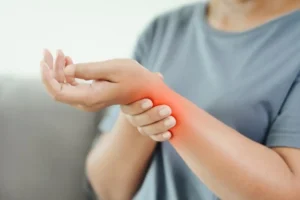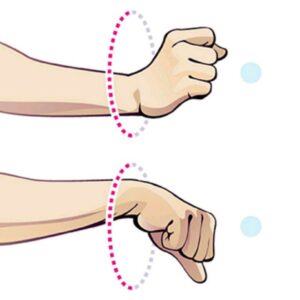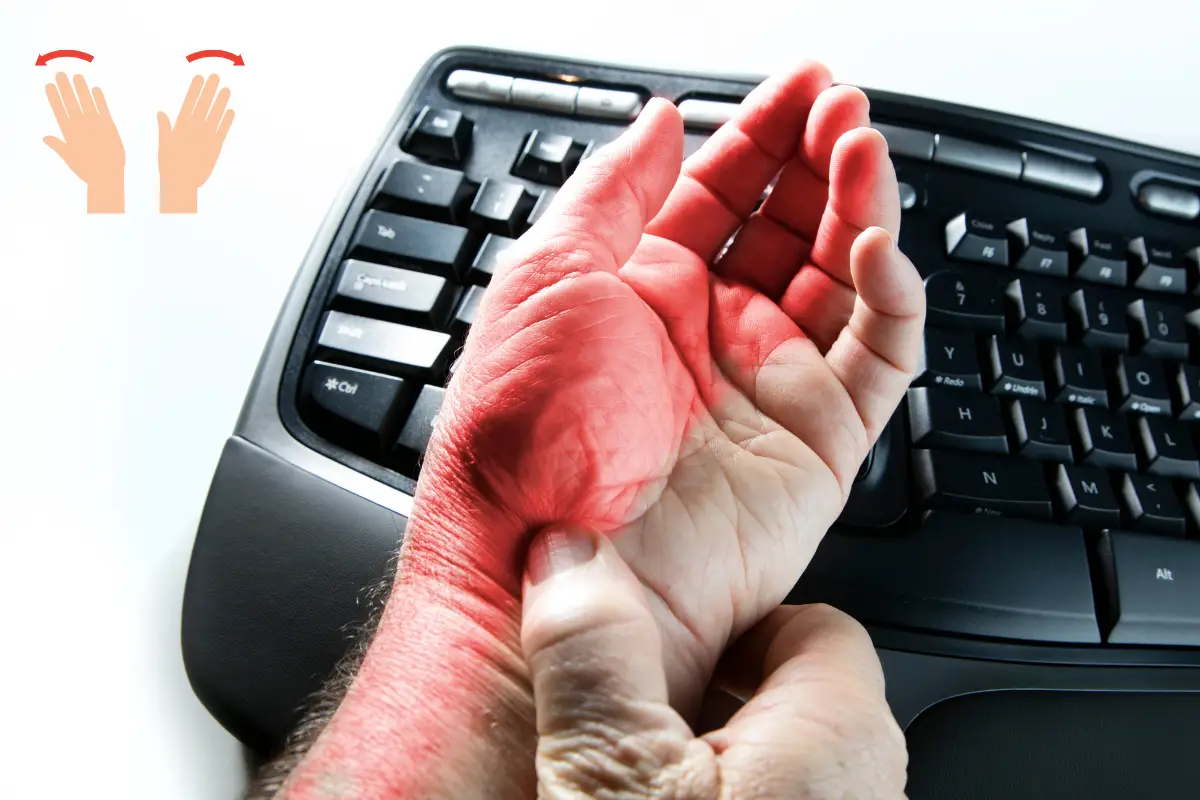- +91 75677 63301
- 24*7 Emergency Care
Therapeutic exercise program for carpal tunnel syndrome
- Home
- /
- Carpal Tunnel Syndrome
- /
- Therapeutic exercise program for...

Carpal Tunnel Syndrome (CTS) is a common condition that causes pain, numbness, tingling, and weakness in the hand and fingers. It occurs when the median nerve—which runs through the wrist’s carpal tunnel—gets compressed due to swelling or repetitive stress.
While braces and medication can help relieve symptoms, therapeutic exercises play a crucial role in long-term management. A regular and guided exercise program can reduce pressure on the median nerve, improve mobility, and restore strength in the hand.
In this blog, we’ll cover:
- How exercises help in CTS
- Precautions before starting
- Step-by-step therapeutic exercises
Table of Contents
ToggleWhy do exercises matter in carpal tunnel syndrome?
Therapeutic exercises:
- Improve blood flow to the median nerve.
- Reduce inflammation in surrounding tendons.
- Enhance wrist flexibility and mobility.
- Strengthen muscles to prevent further compression.
- Promote faster recovery post-surgery (if needed).
These exercises are especially beneficial for mild to moderate CTS and can be performed at home with little to no equipment.
Important precautions before starting
- Always consult a hand specialist or physiotherapist before beginning any exercise routine.
- Discontinue exercises if you experience sharp pain, increased tingling, or discomfort.
- Exercises should be slow, controlled, and never forceful.
Therapeutic exercises for carpal tunnel syndrome
1. Wrist glides

Purpose: To encourage tendon and nerve movement within the carpal tunnel.
How to do it:
- Hold your hand upright like a “stop” signal.
- Slowly bend your wrist backward, keeping fingers straight.
- Return to the start and repeat 10–15 times per hand.
2. Median nerve glides
Purpose: To gently mobilize the median nerve.
How to do it:
- Make a fist with your thumb outside.
- Slowly open your hand and extend the fingers and wrist backward.
- With your other hand, gently pull the thumb away to stretch the nerve.
- Repeat 5–10 times on each hand.
3. Wrist flexor stretch
Purpose: To stretch muscles that can compress the median nerve.
How to do it:
- Extend your arm straight with your palm facing up.
- Use your other hand to gently pull your fingers back.
- Hold for 15–30 seconds.
- Repeat 2–3 times per arm.
4. Wrist extensor stretch
Purpose: Improves flexibility of wrist extensors.
How to do it:
- Extend your arm with your palm facing down.
- Gently pull the fingers downward using the opposite hand.
- Hold for 15–30 seconds.
- Repeat 2–3 times.
5. Tendon gliding exercise
Purpose: Helps move the tendons through the carpal tunnel to prevent stiffness.
How to do it:
Perform the following hand positions slowly:
- Straight hand
- Hook fist (bending only middle and end joints)
- Full fist
- Tabletop position
- Straight fist (knuckles bent, other joints straight)
Hold each for 3–5 seconds and repeat 5–10 times daily.
6. Wrist circles

Purpose: Promotes circulation and improves joint mobility.
How to do it:
- Hold your arm out and make slow, circular wrist motions clockwise and counterclockwise.
- Perform 10 reps in each direction.
7. Grip strengthening with soft ball
Purpose: Improves hand muscle strength and function.
How to do it:
- Use a soft therapy ball or sponge.
- Squeeze gently and hold for 3–5 seconds.
- Repeat 10–15 times.
Note: Avoid if symptoms worsen.
How often should you do these exercises?
A typical routine might involve doing:
- Stretching exercises 2–3 times per day.
- Gliding and strengthening once daily.
- Adjust frequency based on symptom severity and professional advice.
When exercises alone may not be enough?
While exercises are highly effective, they may not work alone in severe cases or where there is structural damage. You should see a specialist if:
- Symptoms persist for more than a few weeks.
- There is significant weakness or muscle wasting.
- You have constant numbness or night-time pain.
Conclusion
Therapeutic exercises are a powerful tool in managing Carpal Tunnel Syndrome—but the right diagnosis and personalized plan are key to successful outcomes.
At Krisha Hand Hospital, Ahmedabad, our expert team offers comprehensive care for hand and wrist conditions—including physiotherapy guidance, non-surgical treatments, and advanced surgical care when needed.
Take the first step towards pain-free hands. Book a consultation at Krisha Hand Hospital and get tailored support for your recovery.
Author bio
Dr. Karn Maheshwari is the founder of Krisha Hand Hospital, Ahmedabad, established in 2016. He is the only fnb-qualified hand surgeon across Gujarat, Rajasthan, and Madhya Pradesh.
With MS and DNB in orthopedics, Dr. Maheshwari specializes in treating a wide range of hand and wrist conditions, including carpal tunnel syndrome, sports hand injuries, orthopedic hand surgery, ganglion cysts, mangled hand injuries, congenital hand differences, brachial plexus palsy, cerebral palsy & spastic hand, hand tendinopathy, hand microsurgery, hand swelling, hand transplants, hand reimplantation, rheumatoid hand deformities, and peripheral nerve injuries & compressive neuropathies.
Dr. Maheshwari’s unmatched expertise and patient-centric approach ensure world-class treatment, advanced surgical solutions, and optimal recovery for patients with complex hand and wrist conditions.
FAQs
In mild to moderate cases, therapeutic exercises can significantly reduce symptoms and may prevent the need for surgery. However, severe or chronic cases may require additional treatments such as splinting, medications, or surgery.
Most people notice some relief within 2 to 4 weeks of consistent daily exercise. However, full improvement can take several weeks to months depending on the severity and cause of the condition.
Yes, many of the exercises are gentle and safe for home use if performed correctly. However, it is best to consult a physiotherapist or hand specialist initially to ensure proper technique and prevent overuse.
If done incorrectly or too aggressively, exercises may temporarily increase symptoms. It’s important to perform them slowly and stop if you feel sharp pain, increased tingling, or numbness.
Yes. Post-operative hand therapy, including stretching and strengthening exercises, is often recommended to regain mobility and prevent scar tissue formation. Always follow your surgeon or therapist’s instructions.
Stretching exercises can be done 2–3 times daily, while strengthening and gliding exercises are typically recommended once daily. Frequency can be adjusted based on your symptoms and therapist’s advice.
Yes, gentle exercises are generally safe and can help reduce pregnancy-related wrist swelling and nerve compression. However, always check with your doctor before starting any routine.
Most exercises require no equipment or just a soft therapy ball or sponge for grip strengthening. They are easy to perform at home or work.







